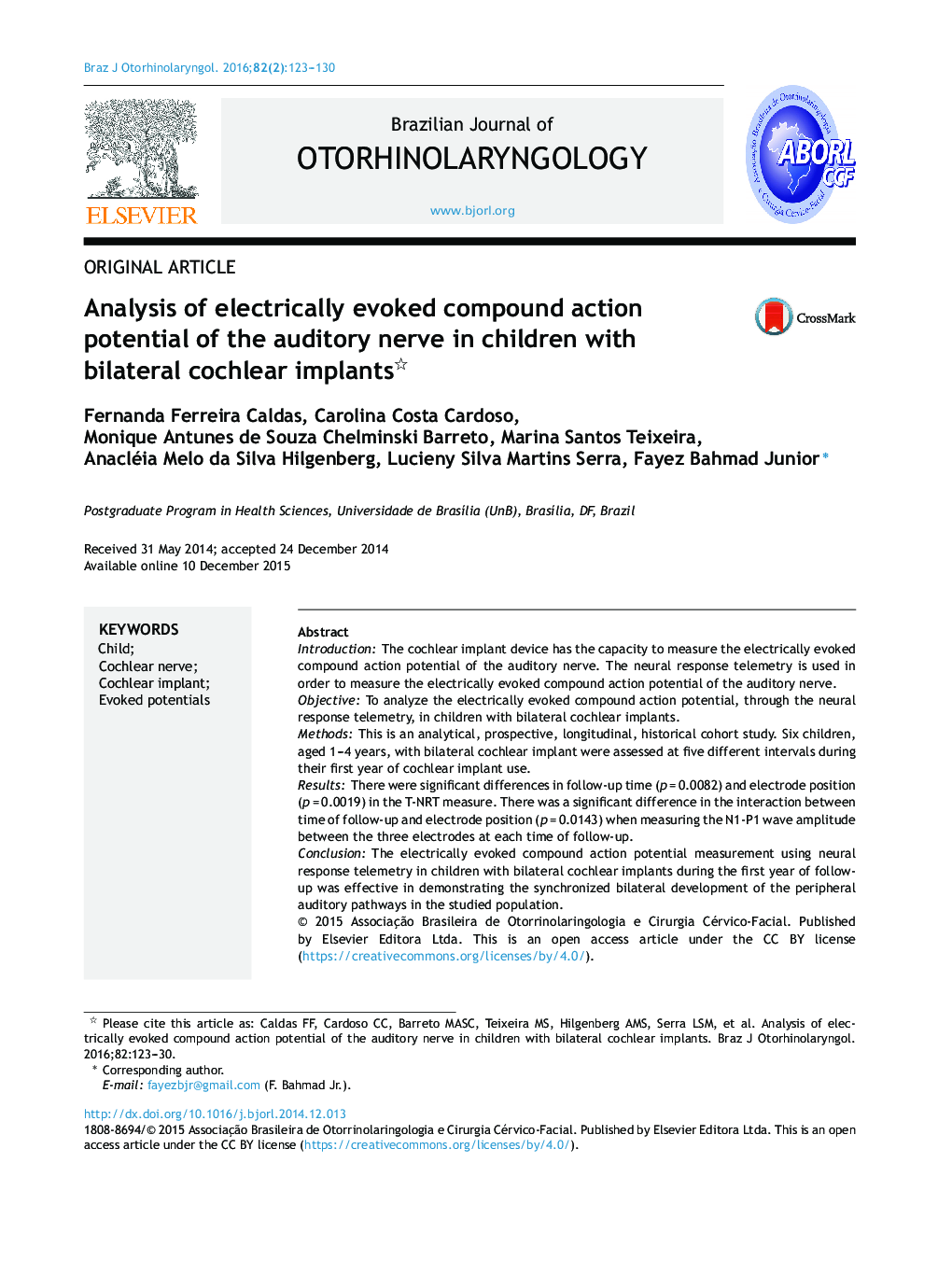| Article ID | Journal | Published Year | Pages | File Type |
|---|---|---|---|---|
| 4106074 | Brazilian Journal of Otorhinolaryngology | 2016 | 8 Pages |
IntroductionThe cochlear implant device has the capacity to measure the electrically evoked compound action potential of the auditory nerve. The neural response telemetry is used in order to measure the electrically evoked compound action potential of the auditory nerve.ObjectiveTo analyze the electrically evoked compound action potential, through the neural response telemetry, in children with bilateral cochlear implants.MethodsThis is an analytical, prospective, longitudinal, historical cohort study. Six children, aged 1–4 years, with bilateral cochlear implant were assessed at five different intervals during their first year of cochlear implant use.ResultsThere were significant differences in follow-up time (p = 0.0082) and electrode position (p = 0.0019) in the T-NRT measure. There was a significant difference in the interaction between time of follow-up and electrode position (p = 0.0143) when measuring the N1-P1 wave amplitude between the three electrodes at each time of follow-up.ConclusionThe electrically evoked compound action potential measurement using neural response telemetry in children with bilateral cochlear implants during the first year of follow-up was effective in demonstrating the synchronized bilateral development of the peripheral auditory pathways in the studied population.
ResumoIntroduçãoO implante coclear tem a capacidade de medir o potencial de ação composto eletricamente evocado do nervo auditivo (ECAP). Para esta verificação utiliza-se uma medida chamada telemetria de respostas neurais.ObjetivoAnalisar o potencial de ação composto evocado eletricamente, por meio da neurotelemetria de respostas neurais, em crianças usuárias de implante coclear bilateral.MétodoTrata-se de um estudo analítico, prospectivo, de coorte histórica longitudinal. Foram recrutadas seis crianças, com idades entre de 1-4 anos, usuárias de implante coclear bilateral. Estas crianças foram avaliadas em cinco momentos durante o primeiro ano de uso do implante coclear.ResultadosHouve diferença significativa no tempo de acompanhamento (p = 0,0082) e posição do eletrodo (p = 0,0019) na medida de T-NRT. Houve diferença significativa na interação entre tempo de acompanhamento e posição do eletrodo (p = 0,0143) na medida da amplitude das ondas N1-P1 entre os três eletrodos a cada tempo de acompanhamento.ConclusãoA mensuração do ECAP por meio da NRT nas crianças com implante coclear bilateral durante o primeiro ano de acompanhamento foi uma medida importante para apresentar o desenvolvimento bilateral da via auditiva periférica de forma sincronizada nesta população estudada.
